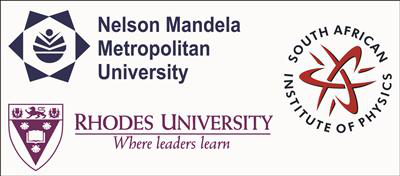Speaker
Abstract content <br> (Max 300 words)<br><a href="http://events.saip.org.za/getFile.py/access?resId=0&materialId=0&confId=34" target="_blank">Formatting &<br>Special chars</a>
iThemba LABS proposes a 70 MeV proton accelerator which has the capability of extracting two H¯ ion beams simultaneously. This allows the simultaneous production of radioactive ion beams and of medical radioisotopes. This accelerator will release the separated-sector cyclotron completely from medical radioisotope production for more physics experiments with stable beams. From literature, neutron induced fission gives enhanced production of neutron-rich fission fragments compared to proton induced fission, thus there is a need to find efficient ways of producing neutrons from protons. Beryllium targets have been suggested, but increasing proton beam current to achieve higher fission rates could lead to cooling problems. Cooling might be achieved in a natural way by using enriched H218O water as 16O is a poor neutron converter. With no data available for 18O above 25 MeV, this necessitated the measurement of neutron yields from the 18O(p,xn) reactions in the proton energy region of interest of 66 MeV. Quasi-monoenergetic neutron spectra were thus measured at proton energies of 66; 54; 42 and 30 MeV hitting on 1 mm thick H218O water target using the time of flight (ToF) technique. Neutron production from a 7Li (3 mm thick) target was also measured at the same energies to validate H218O measurements at 0 and 16 degrees. The spectra deduced at these measured energies were used to interpolate neutron spectra in MeV steps to simulate neutron spectra of 18O thicker targets. For comparison the 18O thick target of 40 mm was also measured using the proton beam of 62 MeV at 0 and 16 degrees. Experimental results are compared to theoretical calculations performed using MCNPX v2.6.0 which uses existing evaluated data from Lawrence Livermore National Lab (ENDL92) or Los Alamos National Lab (ENDF/B-VII).
Would you like to <br> submit a short paper <br> for the Conference <br> Proceedings (Yes / No)?
No
Apply to be<br> considered for a student <br> award (Yes / No)?
yes
Level for award<br> (Hons, MSc, <br> PhD, N/A)?
PhD
Main supervisor (name and email)<br>and his / her institution
Dr Rob Bark bark@tlabs.ac.za
iThemba LABS
Please indicate whether<br>this abstract may be<br>published online<br>(Yes / No)
yes

